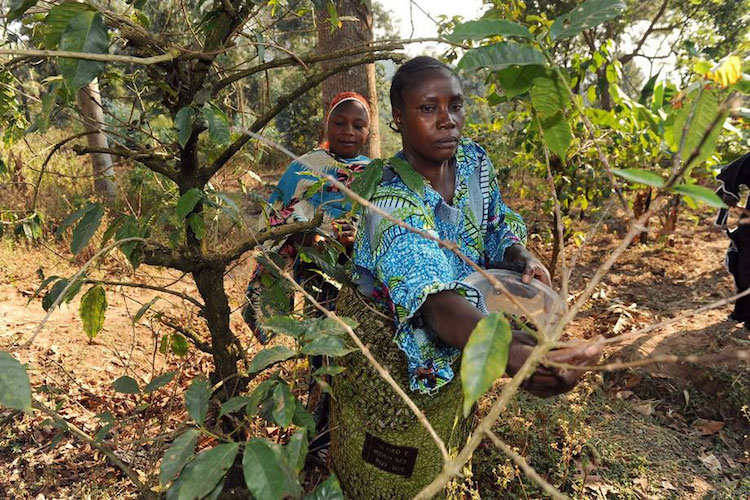By Ronald Joshua
ROME (IDN) – The United States Agency for International Development (USAID) and the Food and Agriculture Organization of the United Nations (FAO) have signed a $15 million agreement aimed at boosting the capacity of developing countries to track key agricultural data – information that is essential to good policymaking and that will help track progress toward achieving the Sustainable Development Goals (SDGs).
FAO said in a news release on September 7, the USAID donation will cover the first phase of an FAO-led project that will run from 2016 to 2021, starting with pilot efforts in four developing countries – two in sub-Saharan Africa, one in Latin America and one in Asia. A dialogue is under way with eligible countries.
The goal of the project is to design and implement a new and cost-effective approach to agricultural data collection in developing world contexts, known as agricultural integrated surveys (AGRIS).
FAO said that the AGRIS methodology will not only capture improved annual data on agricultural production, but also broader and more detailed structural information relating to farms, including employment, machinery use, production costs, farming practices, and environmental impacts.
It will incorporate recent innovations like remote sensing, GPS, mobile technology and various uses of “big data”. These tools will introduce more objective approaches to measuring agricultural performance, in some cases replacing traditional, more expensive methods.
In addition to better and more detailed data, AGRIS will also promote the integration of disparate data sources, improve data timeliness and usability, and cut data collection costs.
“The end result,” according to FAO, “will be high-quality data on a wide range of technical, economic, environmental and social dimensions of agriculture that will help governments analyse and understand the impacts of agricultural policies, assess progress toward the SDGs and other goals, and shape better policies.”
The need for better, cost-effective and timely statistical data for agricultural and rural areas is widely recognized. Critical gaps in data production and dissemination persist in several countries – a consequence of long-standing issues such as shortages of financial and human resources, and the resulting limitations in technical capacities, the UN agricultural agency said.
FAO has already been addressing such issues through the “Global Strategy to improve agricultural and rural statistics” (GSARS) programme, an umbrella effort working to enhance the capacity of developing countries to produce and use agricultural and rural statistics and to strengthen statistical governance mechanisms. AGRIS is a spin-off of the Global Strategy’s research programme.
“With efforts like our Global Strategy and ‘next generation’ tools like AGRIS, we’re engaging with partners to spark what we hope will be a new era in agricultural data collection,” FAO Chief Statistician Pietro Gennari said.
AGRIS is being implemented by FAO within the context of the multi-agency Global Rural and Agricultural Integrated Surveys (GRAInS) Partnership, which is currently establishing in Rome a Global Survey Hub.
“Strong national data systems are critical for governments and private sector actors to make informed and smart decisions that foster food security and economic prosperity,” the Assistant to the Administrator for USAID’s Bureau for Food Security, Beth Dunford, said in the FAO news release.
FAO Director-General José Graziano da Silva said: “In the decades to come, humanity will need to produce more food for a growing population using natural resources such as water, land and biodiversity in a sustainable way – while coping with the challenges imposed by climate change.”
He added: “Our ability to boost food yields sustainably and meet the SDG hunger eradication target will hinge on the availability of better, cost-effective and timely statistical data for agriculture and rural areas.”
The 17 SDGs of the 2030 Agenda for Sustainable Development – adopted by world leaders in September 2015 – officially came into force on January 1, 2016. Over the next fifteen years, with the aim of achieving the SDGs, countries will mobilize efforts to end all forms of poverty, fight inequalities and tackle climate change, while ensuring that no one is left behind.
In particular, Goal 2 of the SDGs is centred on ending hunger, achieving food security, improving nutrition, and promoting sustainable agriculture. According to FAO, Goal 2 recognizes the interlinkages among supporting sustainable agriculture, empowering small farmers, promoting gender equality, ending rural poverty, ensuring healthy lifestyles, tackling climate change, and other issues. [IDN-InDepthNews – 07 September 2016]
Photo: Agro-forestry farmers tend to their crops in Kigoma, Tanzania. Forests are an integral part of the national agriculture policy with the aim of protecting arable land from erosion and increasing agricultural production. Photo: FAO/Simon Maina
IDN is the flagship of International Press Syndicate.

